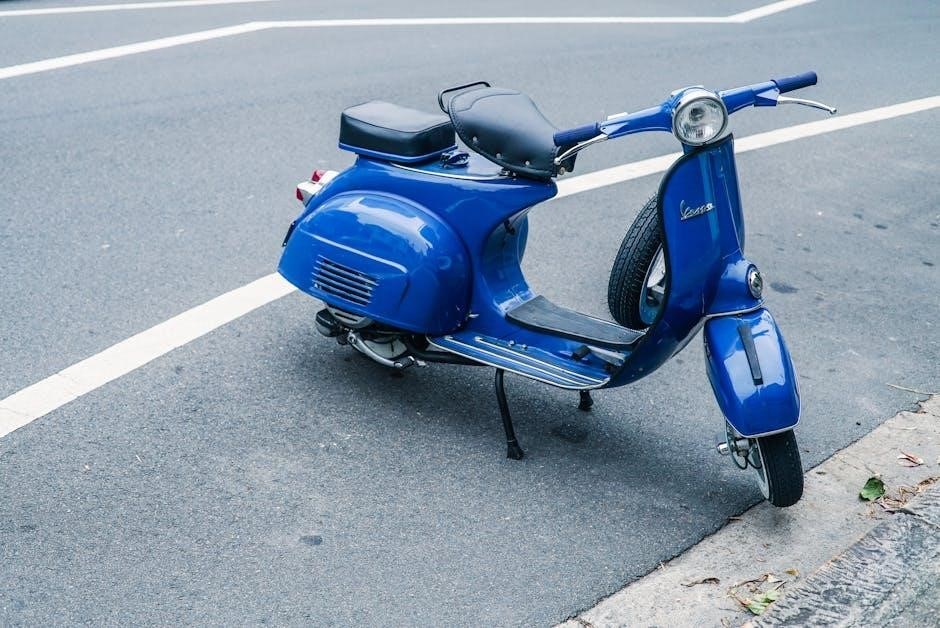Learning to drive a manual transmission car offers improved control, fuel efficiency, and a deeper connection with the vehicle. It’s a valuable skill for any driver, requiring patience and practice. Starting with the right car is crucial for a smooth learning experience. Older Japanese models, such as Honda, Toyota, and Mazda, are often recommended due to their reliability and smooth clutch mechanisms. These cars provide an ideal environment for mastering the basics of manual driving. With time and practice, anyone can become proficient in driving a stick shift, enhancing their driving skills and confidence.
Why Learning Manual Transmission is Important
Mastering manual transmission enhances driving control, fuel efficiency, and connection with the vehicle. It offers better handling in various conditions and is cost-effective. Learning on reliable cars like older Honda, Toyota, or Mazda models ensures a smoother experience. Avoiding older Hyundai and Kia models with self-adjusting clutches is advisable for beginners. Manual driving promotes engagement and mechanical understanding, reducing accidents and improving enjoyment. It teaches patience and skill flexibility, making it a valuable asset for any driver seeking both practicality and performance.
Overview of the Best Cars for Beginners
Beginners benefit from cars with smooth clutches and forgiving drivetrains. Older Japanese models like the Honda Civic, Toyota Corolla, and Mazda3 are ideal due to their reliability and simplicity. These cars offer lightweight designs, making them easy to handle. Avoid vehicles with complex or sensitive systems that can overwhelm new drivers. Cars with lower torque and moderate horsepower are best for learning, as they reduce the risk of stalling. Additionally, these models are affordable and have accessible parts, ensuring a cost-effective learning experience. They provide a comfortable environment for mastering the fundamentals of manual driving.
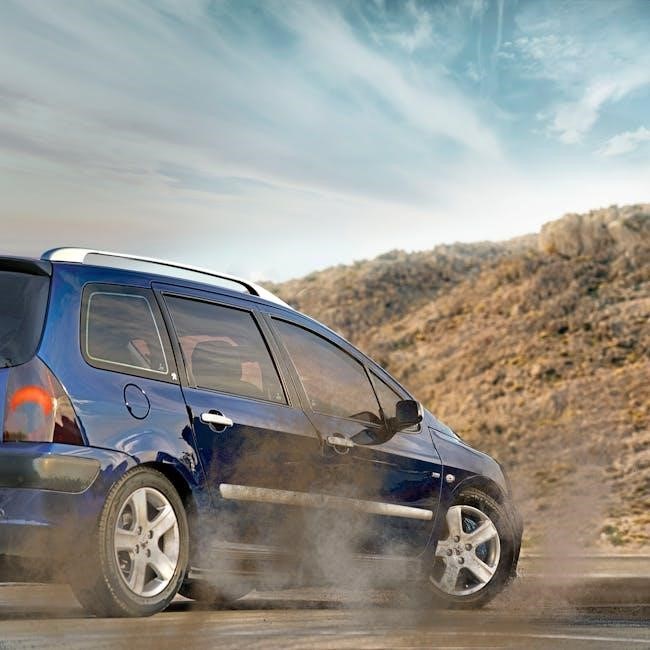
Factors to Consider When Choosing a Car to Learn Manual Transmission
When selecting a car for learning manual transmission, consider factors like clutch smoothness, vehicle weight, and cost of parts. These elements ensure an ideal learning experience.
Cost and Availability of Parts
When choosing a car to learn manual transmission, consider the cost and availability of parts. Older Japanese models like Honda, Toyota, and Mazda often have affordable and accessible parts, making them ideal for learners. Avoid cars with rare or expensive components, as repairs can become costly. Additionally, vehicles with self-adjusting clutches, such as older Hyundai and Kia models, should be avoided due to potential maintenance issues. Ensuring parts are readily available and budget-friendly is crucial for a stress-free learning experience. This factor helps keep overall costs low, allowing you to focus on mastering the skill without financial strain. Reliable parts availability also minimizes downtime, letting you practice consistently and improve faster. Moreover, widespread availability means you can find replacement parts easily, whether through dealerships or aftermarket suppliers, which is essential for long-term maintenance. By prioritizing cost and availability, you can choose a car that supports your learning journey effectively. This practical approach ensures your focus remains on developing your driving skills rather than dealing with unexpected expenses or part shortages. Therefore, selecting a model with affordable and accessible parts is a wise decision for anyone learning to drive a manual transmission car. .
Weight and Size of the Vehicle
When learning manual transmission, the weight and size of the vehicle play a significant role. Lighter cars with compact sizes are easier to handle, especially for beginners, as they require less effort to control. Heavier vehicles can be more challenging to manage during stalls or low-speed maneuvers. A smaller car also offers better visibility and maneuverability, making it ideal for practicing in tight spaces. Additionally, lighter vehicles tend to have smoother clutch engagement, reducing the risk of stalling. Opting for a lighter, more compact car helps build confidence and coordination, making the learning process less intimidating and more enjoyable. This ensures a better overall experience. .
Clutch and Gearbox Smoothness
Clutch and gearbox smoothness are crucial for learning manual transmission. A smooth clutch reduces the likelihood of stalling, making it easier for beginners to master take-offs and gear shifts. Cars with well-designed gearboxes provide a more intuitive shifting experience, allowing learners to focus on coordination. Older Japanese models, such as Honda, Toyota, and Mazda, are often praised for their smooth clutch engagement and precise gearboxes. Avoid vehicles with overly stiff or unpredictable clutches, as they can frustrate learners. A car with a responsive and forgiving clutch system helps build confidence and reduces the difficulty of mastering manual driving skills. Smooth operation enhances the learning process significantly. .
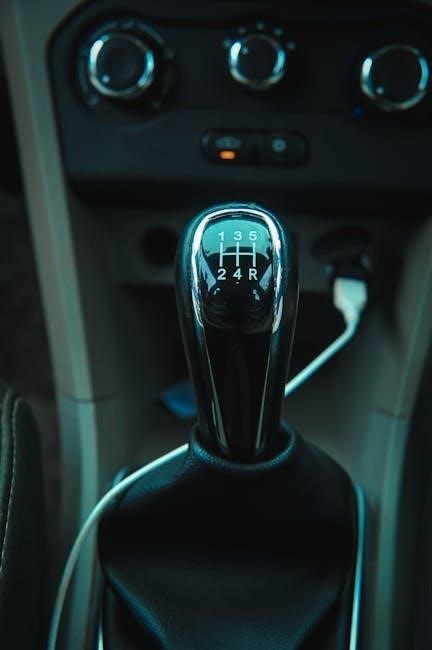
Recommended Car Models for Learning Manual Transmission
Older Japanese models like Honda Civic, Toyota Corolla, and Mazda3 are ideal for learning manual transmission. They offer smooth mechanics and reliability, making them perfect for beginners.
Honda Civic (Older Models)
The Honda Civic, particularly older models, is an excellent choice for learning manual transmission. Known for its reliability and smooth clutch operation, it provides a forgiving platform for beginners. The Civic’s lightweight design and responsive gearbox make mastering the clutch-to-accelerator balance easier. Additionally, its fuel efficiency and low maintenance costs add to its appeal. Older models from the early 2000s are especially recommended due to their simplicity and durability. They are also widely available, with affordable parts, making them an ideal starting point for anyone looking to learn how to drive a manual transmission vehicle without breaking the bank.
Toyota Corolla (Manual Transmission Versions)
The Toyota Corolla, especially in manual transmission versions, stands out as a top choice for learners. Renowned for its reliability and durability, it offers a smooth, forgiving driving experience. The Corolla’s lightweight design and responsive clutch make it easier to master the fundamentals of manual driving. Its fuel efficiency and low maintenance costs further enhance its appeal. Manual transmission versions from the late 90s to early 2000s are particularly sought after for their straightforward mechanics and availability of affordable parts; This makes the Corolla an excellent option for beginners aiming to learn manual transmission without worrying about high costs or complex repairs.
Mazda3 (First Generation)
The first-generation Mazda3 is a stellar choice for learning manual transmission. Its sporty yet practical design makes it a joy to handle, with a responsive clutch and smooth gearbox. The compact size and lightweight construction provide excellent maneuverability, ideal for beginners practicing in tight spaces. Known for its reliability and affordability, the Mazda3 offers a engaging driving experience without compromising on simplicity. Its intuitive controls and forgiving nature make it easier to master the fundamentals of manual driving. With affordable parts and a robust build, it’s a cost-effective and enjoyable option for anyone looking to hone their stick-shift skills.
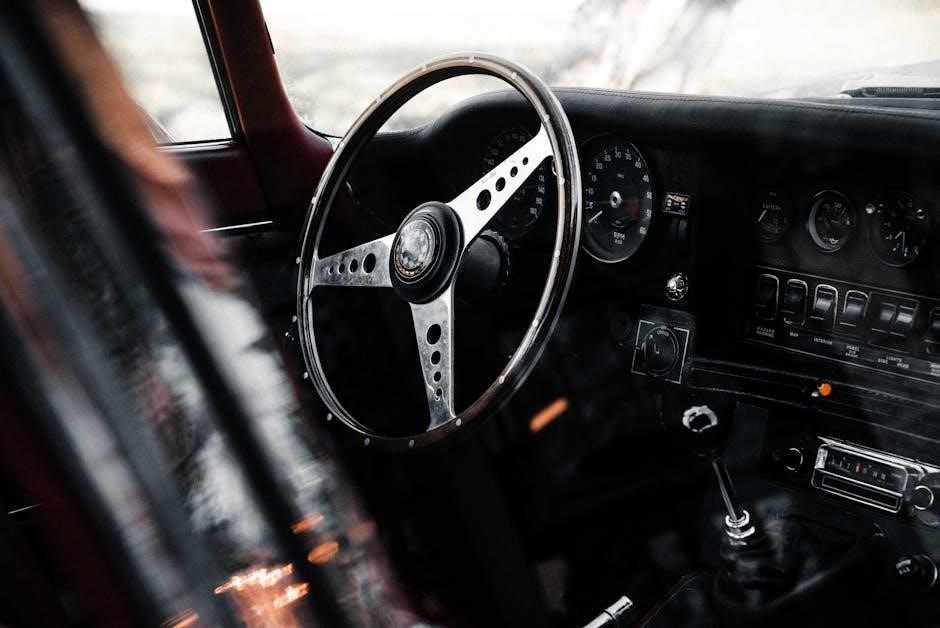
Why Older Japanese Cars Are Ideal for Learning
Older Japanese cars are ideal for learning manual transmission due to their reliability, simplicity, and affordability, making them perfect for mastering clutch control and basic techniques.
Reliability and Simplicity of Mechanisms
Older Japanese cars, such as Honda, Toyota, and Mazda models, are renowned for their robust engineering and straightforward mechanical designs. Their simplicity ensures fewer complexities, making them easier to handle for beginners. With durable components and minimal electronic interference, these vehicles provide a more direct driving experience. This reliability and lack of intricate systems allow learners to focus on mastering clutch control and gear shifts without unnecessary distractions. Their mechanical simplicity also reduces the risk of stalling or damaging the car, creating a stress-free environment for practice.
Lower Cost of Ownership
Older Japanese cars typically offer a lower cost of ownership, making them an affordable choice for learning manual transmission. Their parts are widely available and often inexpensive, reducing maintenance and repair costs. Additionally, these vehicles usually have better fuel efficiency, lowering daily expenses. Insurance rates are generally lower for older models, further cutting ownership costs. This affordability allows learners to practice without financial strain, making the process more accessible and stress-free. The combination of low purchase price and ongoing savings makes these cars an excellent choice for those looking to learn manual driving without breaking the bank.
Better Clutch Control for Beginners
Older Japanese cars often feature clutches with smooth, predictable engagement, making them ideal for learning. The clutch pedal in models like Honda Civic or Toyota Corolla provides a clear “biting point,” helping beginners sense when the clutch engages. This feedback is crucial for mastering the balance between clutch release and accelerator input. Additionally, these cars are more forgiving of rookie mistakes, such as riding the clutch or stalling. The simplicity of their mechanical systems allows learners to focus on technique without overwhelming complexity. This makes the learning process less stressful and more effective for developing good driving habits from the start.
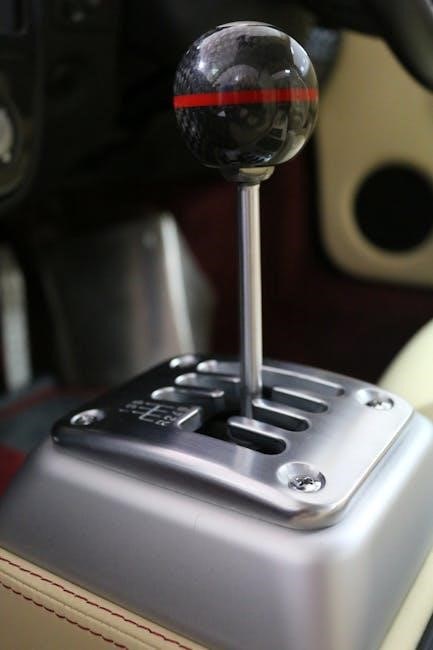
The Learning Process: Tips and Tricks
Start by practicing in first gear, focusing on smooth clutch release and accelerator balance. Find a safe, open space to minimize distractions and build confidence gradually.
Finding a Safe Place to Practice
Finding a safe and suitable location is essential for learning manual transmission. Look for an open, flat area like an empty parking lot or quiet street with minimal traffic. Avoid steep hills or busy roads to reduce stress and distractions. Ensure the space is large enough to practice moving forward, stopping, and shifting gears without obstacles. A calm environment allows focus on mastering clutch control and smooth transitions. Practicing in a reliable car, such as an older Honda Civic or Toyota Corolla, further enhances the learning experience. Consistency and patience are key to building confidence behind the wheel.
Mastering the Clutch and Accelerator Balance
Mastering the clutch and accelerator balance is critical for smooth manual driving. Begin by feeling the “biting point” where the clutch engages the engine. Practice slowly releasing the clutch while pressing the accelerator to avoid jerky starts. In older Japanese cars like the Mazda3 or Honda Civic, this balance is easier to achieve due to their responsive clutches. Focus on coordinating your foot movements, keeping the car in first gear until you gain control. Gradually shift to higher gears as you build momentum, ensuring smooth transitions. This balance enhances driving comfort and reduces wear on the clutch and gearbox over time.
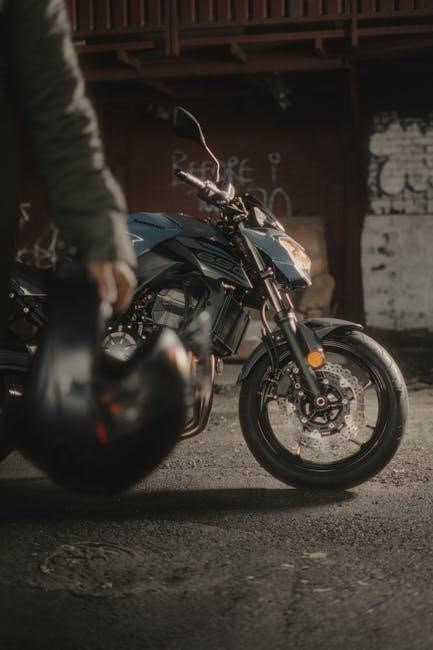
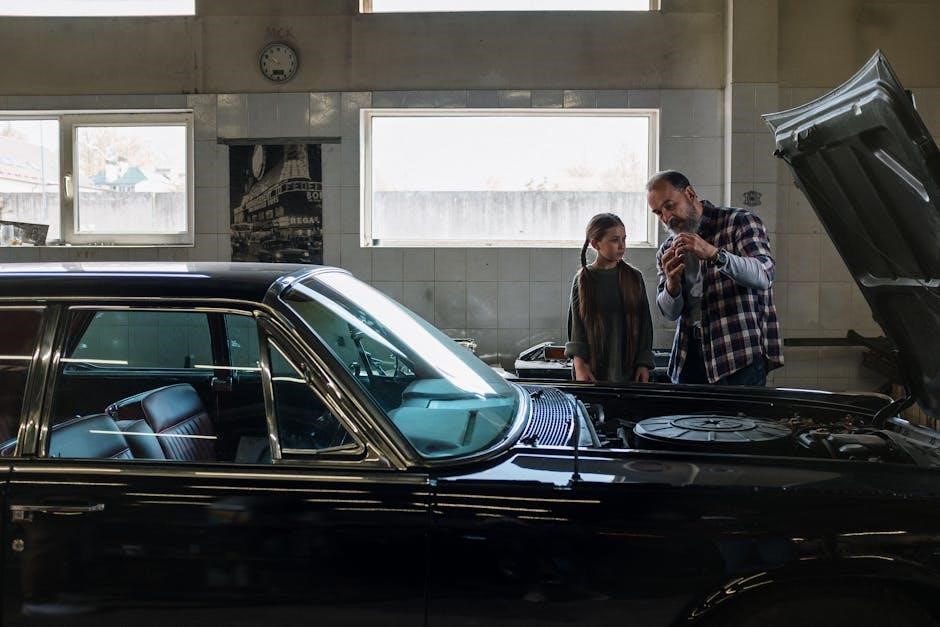
Common Mistakes to Avoid
Avoid over-revving the engine, as it strains the gearbox and clutch. Riding the clutch is another mistake, causing unnecessary wear. Use the correct gear for speed to maintain control and prevent stalling. These errors are common but can be minimized with practice and patience in reliable cars like older Hondas or Toyotas, known for their forgiving clutch systems.
Over-revving the Engine
Over-revving the engine is a common mistake that can damage the gearbox and clutch. It occurs when the driver shifts gears too aggressively or rides the clutch at high RPMs. This puts unnecessary strain on the engine and transmission, leading to premature wear. To avoid this, listen to the engine’s sound and feel for resistance. Shift gears smoothly and only when necessary. Practicing in cars with forgiving clutch systems, like older Honda or Toyota models, can help minimize this error. Keeping RPMs low during learning phases reduces wear and helps develop better driving habits. Patience is key to mastering gear control.
Riding the Clutch
Riding the clutch, or keeping it partially engaged, is a bad habit that can quickly wear out the clutch and damage the gearbox. This mistake often occurs when learners are nervous or unsure of gear shifts. Riding the clutch creates unnecessary friction, leading to overheating and premature wear. It also reduces control over the vehicle, making it harder to accelerate smoothly. To avoid this, practice fully releasing the clutch after shifting gears. Older Japanese cars, like Honda or Toyota models, tend to have smoother clutch systems, making them ideal for learning proper clutch control without riding it excessively.
Mastering manual transmission driving requires patience and practice. Older Japanese models, like Honda or Toyota, are ideal for learning due to their smooth mechanisms and reliability.
Final Thoughts on Choosing the Best Car for Learning
Selecting the right car for learning manual transmission is pivotal. Older Japanese models, such as Honda Civic or Toyota Corolla, are excellent choices due to their simplicity, reliability, and smooth clutch mechanisms. These cars are cost-effective and provide a forgiving environment for mastering the basics. Avoid overly complex or high-performance vehicles, as they can be intimidating for beginners. Prioritize models with good fuel economy and low maintenance costs. With consistent practice and the right vehicle, you’ll quickly gain confidence and proficiency in driving a manual transmission car.
